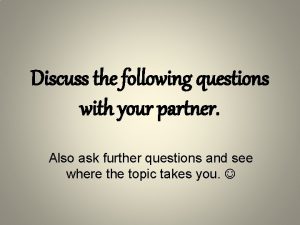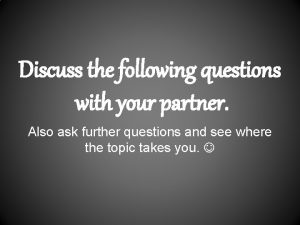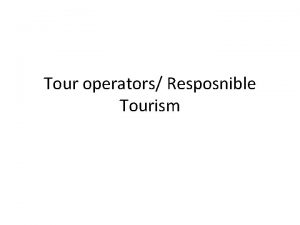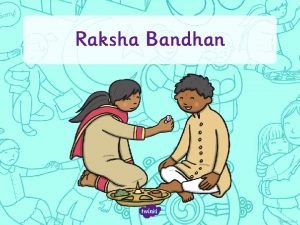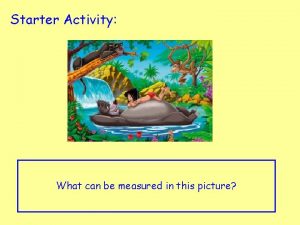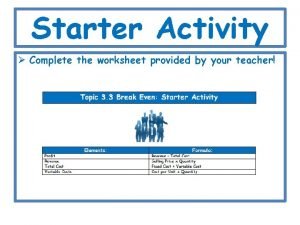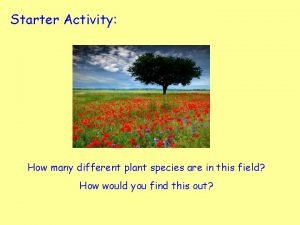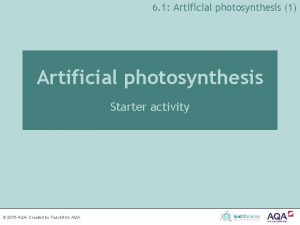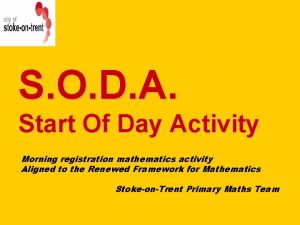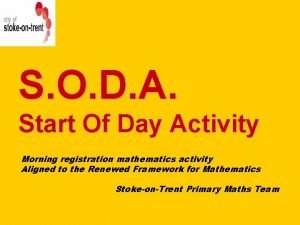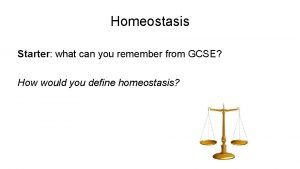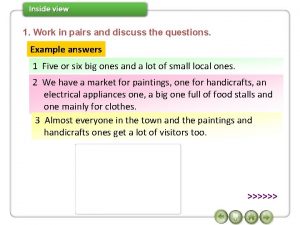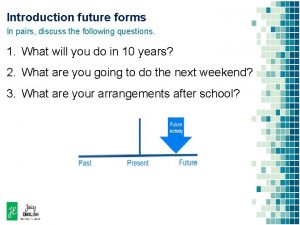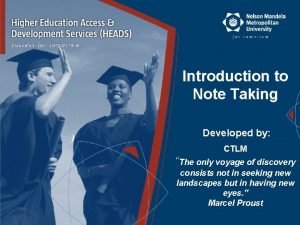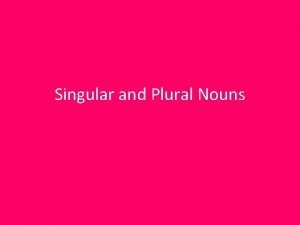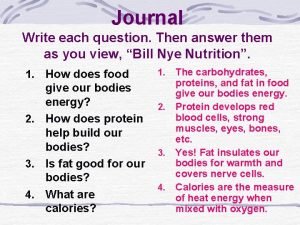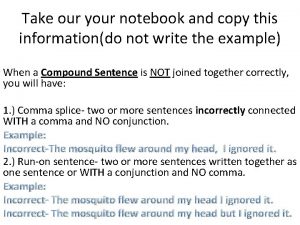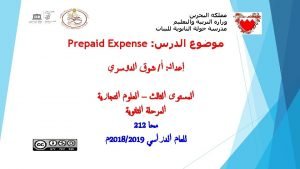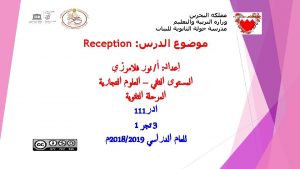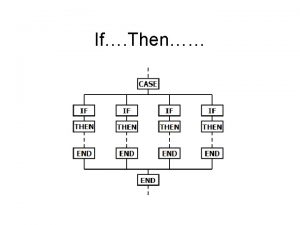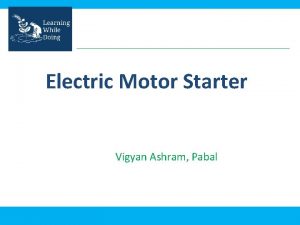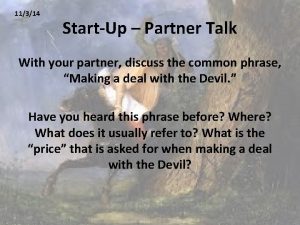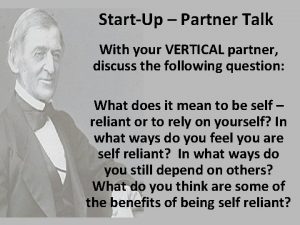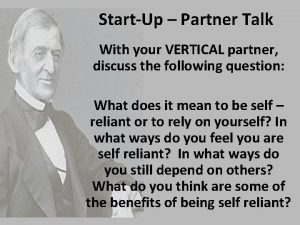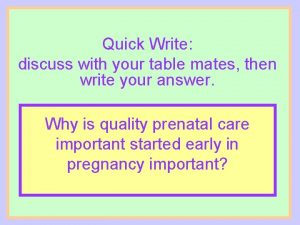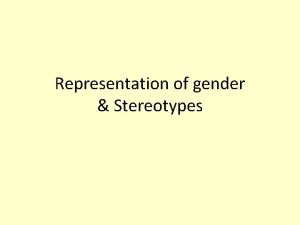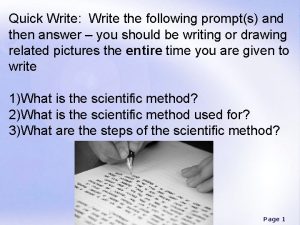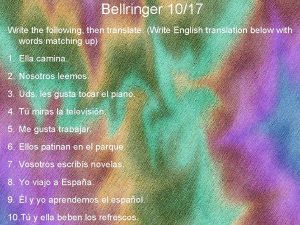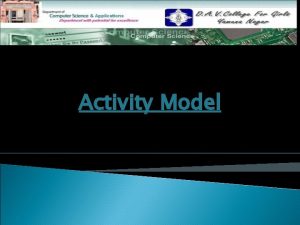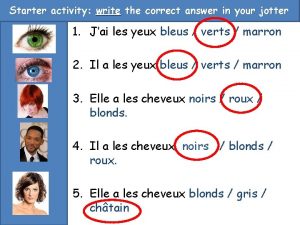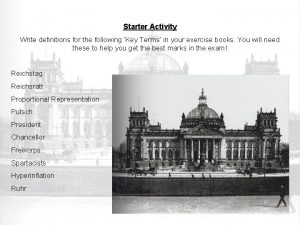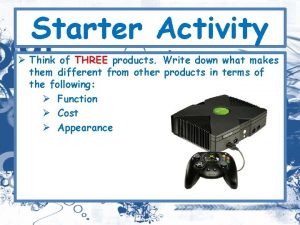STARTER ACTIVITY Discuss with a partner then write

























- Slides: 25

STARTER ACTIVITY Discuss with a partner then write 3 the cycle of analysis without your notes. Lesson focus: What are key concepts and what are key features? Lesson Objectives: 1. To explain the information processing model to a partner (KC 1, KF 1). 2. To review the classifications of skills with a partner (KC 1, KF 2).

CYCLE OF ANALYSIS INVESTIGATE ANALYSE Skills + Technique Preparation of Body (+NAB) Structures and Strategies REVIEW/EVALUATE DEVELOP

CANDIDATES SHOULD BE ABLE TO… …describe and explain how different types of feedback in practice situations improve performance (intrinsic, extrinsic, knowledge of results) …describe and explain a range of advanced skills relating to their chosen practical activities and distinguish between those which are open and closed …describe and explain what distinguishes the skills of a novice from a top level performer (consistency, energy, time, adaptable) …describe and explain how skill are learned, refined and adapted to various practical activities (practice, copying, trial and error, role models) …explain through the use of a simple information processing model how we learn physical skills, and the importance of feedback in evaluating, analysing and planning for improvement in performance

“the learned ability to perform a specific task with greatest efficiency and with minimum amount of effort” The term skill can be used in 2 ways: 1. A specific task to be carried out 2. An ‘indicator’ of the quality of the performance

Key Concept 1: The concept of skill and skilled performance. Key Feature 1: How skills are performed through an information processing model: Input information Selecting information Making decisions Output action Receiving feedback about performance Using received information as new input information.

When you are learning and playing a sport, you use your information processing system o The system is controlled by your brain o It has four parts INPUT DECISIONMAKING FEEDBACK OUTPUT

Example: A cricket ball could be bowled on a line to hit the stumps (input), the batsman decides to play a defensive shot (decision making), he then plays a defensive shot (output), but hears the ball has hit the stumps. TASK: In 2’s now try and write an example for badminton.

DECISION-MAKING INPUT Information your brain receives: The brain processes the information • See: the direction • Hear: other players • Feel: body position FEEDBACK Brain looks at the results of the output (did the ball go to its intended target? ) OUTPUT The actual action you carry out (move your leg to kick the ball)

“Information received during or following a movement” o o o Feedback is used to improve performance Gives information on the effectiveness of a response Allows learning to take place Allows a performer to correct an incorrect movement Reinforces a correct movement Acts as a motivator

INTRINSIC o Feedback from yourself o Arising from the movement itself o You know how it felt o “That felt right” o Proprioception – feeling muscle tension EXTRINSIC o Motivational, reinforcing, informational o External source o E. g. Coach or team mate o Can support intrinsic feedback o Can correct intrinsic feedback

KNOWLEDGE OF RESULTS o Information concerning the outcome. o. Did you get the result you wanted? o Did the shuttle go where I intended? o Proprioception You know when you land correctly from a somersault KNOWLEDGE OF PERFORMANCE o Tells you how well or badly you did o Can come from a coach, teacher or friend o Can study a video of your performance

Use the information processing model. TASK IN 3’S: Using the equipment provided demonstrate the information processing model (input, decision making, output, feedback). 1 member of the group must explain this example to the rest of the class.

Key Concept 1: The concept of skill and skilled performance. Key Feature 2: How skills and techniques are performed for effective, consistent performance whilst also displaying qualities of control, fluency and economy of movement. Understanding of skill classification terms in relation to performance. Open/Closed Simple/Complex Discrete/Serial/Continuous Key Feature 3: How model performance can be used to enhance and develop performance.

…ARE SKILLS WHICH REQUIRE LITTLE DECISION MAKING AND ONLY BASIC MOVEMENT PATTERNS E. G. RUNNING, JUMPING ETC. …ARE SKILLS WHICH REQUIRE THOUGHT AND DECISION MAKING E. G BADMINTON SERVE, HIGH JUMP ETC.

…ARE SKILLS WHICH TAKE PLACE IN A CONSTANTLY CHANGING ENVIRONMENT AND ARE CONSEQUENTLY AFFECTED BY IT …ARE SKILLS WHICH TAKE PLACE IN A FIXED ENVIRONMENT

Performer is not in complete control of the game Participants have to constantly make decisions on how to react/act OPEN SKILL Examples of sports activities which use open skills are games. E. g. football/ rugby/netball/ basketball/ hockey etc… Affected by the ‘environment’ E. g. weather/ opponents/playing surface These types of sports/ games contain a great deal of uncertainty

E. g. Gymnastic activities/diving Performer in complete control of the activity CLOSED SKILL Pre-learned movement patterns No outside influences from weather/opponents, etc…

…ARE SKILLS WHICH HAVE A CLEAR BEGINNING AND E. G BADMINTON SERVE. …ARE SKILLS WHICH ARE MADE UP OF A NUMBER OF SKILLS WHICH ARE PUT TOGETHER IN A SEQUENCE OR SERIES E. G JAVELIN THROW. …ARE SKILLS WHICH HAVE NO CLEAR BEGINNING OR END ARE REPITIOUS E. G FRONT CRAWL, CYCLING.

TASK IN 2’s. Place the following sports on a skill classification continuum Simple High jump Complex Running Badminton serve Jumping Closed Open Rugby Hook Tennis volley Tennis serve Forward roll Soccer interception Saving a goal Golf swing

TASK IN 2’s. Place the following sports on a skill classification continuum Simple Jumping Complex Badminton Running serve Closed Open Saving a goal High jump Rugby Hook Soccer interception Tennis volley Tennis serve Forward roll Golf swing

SPEED: Ability to move all or part of the body quickly AGILITY: Ability to change position/direction quickly COORDINATION: Ability to perform complicated movements with ease FLEXIBILITY: Ability to use full range of movement around the joints of the body BALANCE: Ability to maintain the centre of mass over the base of support whilst stationary or when moving REACTION TIME: Ability to react at speed to a given stimulus/stimuli

Top level performers perform skills with… o A consistently high level o An efficient use of energy o Minimum outlay of time o An ease in adapting skills to suit situation

Practice o Can be trail & error o Guidance Copying o Watching others o Can be role models

WHOLE o Presentation of new skill in its entirety o Teach the skill in its complete form PART o Breaking down of a skill - practise individual components o Parts then assembled into the whole VARIABLE o Practice open skills in varying conditions o Matches game situations

VISUAL o o o Often a demonstration Learner develops a mental image Visual feedback on performers own actions VERBAL o o o Used to describe actions More effective with advanced learners Short phrases e. g. bend knees, stretch fingers MANUAL OR MECHANICAL o o o Provides kinaesthetic awareness Physical support for the performer Response of the performer being directed physically
 Discuss these questions with your partner
Discuss these questions with your partner Discuss the following questions with your partner
Discuss the following questions with your partner Discuss these questions with your partner
Discuss these questions with your partner Discuss these questions with a partner
Discuss these questions with a partner Amateurs talk tactics professionals talk logistics
Amateurs talk tactics professionals talk logistics Abiotic factors clipart
Abiotic factors clipart Starter activity
Starter activity Paired statement key worksheet
Paired statement key worksheet Photosynthesis starter activity
Photosynthesis starter activity Starter of the day activity soda morning soft start
Starter of the day activity soda morning soft start Starter of the day activity soda morning soft start
Starter of the day activity soda morning soft start Homeostasis starter activity
Homeostasis starter activity Look at the image and answer the questions
Look at the image and answer the questions In pairs discuss the questions
In pairs discuss the questions Work in pairs.discuss the questions
Work in pairs.discuss the questions What is sweetened then soured boiled then cooled
What is sweetened then soured boiled then cooled Write the plurals compare with your partner
Write the plurals compare with your partner Then answer them
Then answer them Copy on your notebook
Copy on your notebook Reactants, products and leftovers
Reactants, products and leftovers Debye huckel equation
Debye huckel equation Aoa and aon examples
Aoa and aon examples Form content and use
Form content and use Activity 2 finding the sequence
Activity 2 finding the sequence Activity 2:
Activity 2: Activity 2;
Activity 2;
